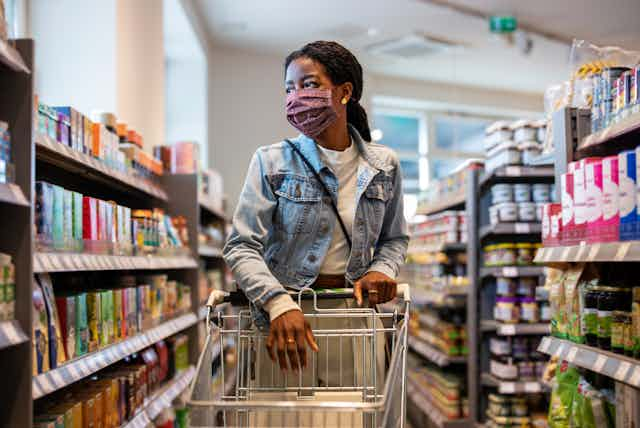COVID is on the rise again, with a peak likely over the holiday season.
Given this, health authorities in a number of Australian states have recommended people start wearing masks again. In Western Australia, masks have been made mandatory in high-risk areas of public hospitals, while they’ve similarly been reintroduced in health-care settings in other parts of the country.
Hospitals and aged care facilities are definitely the first places where masks need to be reinstated during an epidemic. But authorities are differing in their recommendations currently. Calls to mask up, particularly in the wider community, have not been unanimous.
So amid rising COVID cases, should you be wearing a mask?
Read more: We're in a new COVID wave. What can we expect this time?
COVID is still a threat
Unfortunately, SARS-CoV-2 (the virus that causes COVID) has not mutated into just a trivial cold.
As well as causing symptoms in the initial phase – which can be especially serious for people who are vulnerable – the virus can lead to chronic illness in people of any age and health status due to its ability to affect blood vessels, the heart, lungs, brain and immune system.
COVID and its ongoing effects are contributing to substantial disability in society. Loss of productivity due to long COVID is affecting workforce and economies.

While public messaging to “live with COVID” has seemingly encouraged us to move on from the pandemic, SARS-CoV-2 has other ideas. It has continued to mutate, become more contagious, and to evade the protection offered by vaccines.
COVID is not endemic, but is an epidemic virus like influenza or measles, so we can expect waves to keep coming. With this in mind, it’s definitely worth protecting yourself – particularly when cases are rising.
What can we do to protect ourselves?
We know SARS-CoV-2 transmits through the air we breathe. We also know a lot of the transmission risk is from people without symptoms, so you can’t tell who around you is infectious. This provides a strong rationale for universal masking during periods of high transmission.
The need is highest in hospitals where thousands of unsuspecting patients have caught COVID during the course of the pandemic and hundreds have died as a result in Victoria alone. Aged care facilities are similarly vulnerable.
Read more: COVID mask mandates might be largely gone but here are 5 reasons to keep wearing yours
Masks do work. A Cochrane review suggesting they don’t was flawed and subject to an apology.
Masks work equally by protecting others and protecting you. By visualising human exhalations too tiny to see with the naked eye, my colleagues and I showed how masks prevent outward emissions and how each layer of a mask improves this.
The most protective kind of mask is a respirator or N95, but any mask protects more than no mask.
Wearing a mask when visiting health-care or aged-care facilities is important. Wearing a mask at the shops, on public transport and in other crowded indoor settings will improve your chances of having a COVID-free Christmas.

What about vaccines?
Although the virus’ evolution has challenged vaccines, they remain very important. Boosters will improve protection because vaccine immunity wanes and new mutations make older vaccines less effective.
In May 2023 the World Health Organization outlined why monovalent boosters matched to a single current circulating strain gives better protection than the old bivalent boosters (which target two strains). The XBB boosters are available in the United States, and will be available in Australia from December 11.
Read more: What are the new COVID booster vaccines? Can I get one? Do they work? Are they safe?
Testing and treatment will also help. There are effective antivirals for COVID, but you cannot get them without a COVID test, and testing rates are very low. Having some RAT tests on hand means you can quickly isolate and get antivirals if indicated.
Finally, safe indoor air is key. Remember that SARS-CoV-2 spreads silently, mainly by inhaling contaminated air. Opening a window or using an air purifier can significantly reduce your risk, especially in crowded indoor settings like schools. A multi-layered strategy of vaccines, masks, safe indoor air, testing and treatment will help us navigate this COVID wave.
Editor’s note: This article has been updated to reflect the announcement that monovalent XBB 1.5 vaccines will be deployed as part of Australia’s COVID vaccination program.

